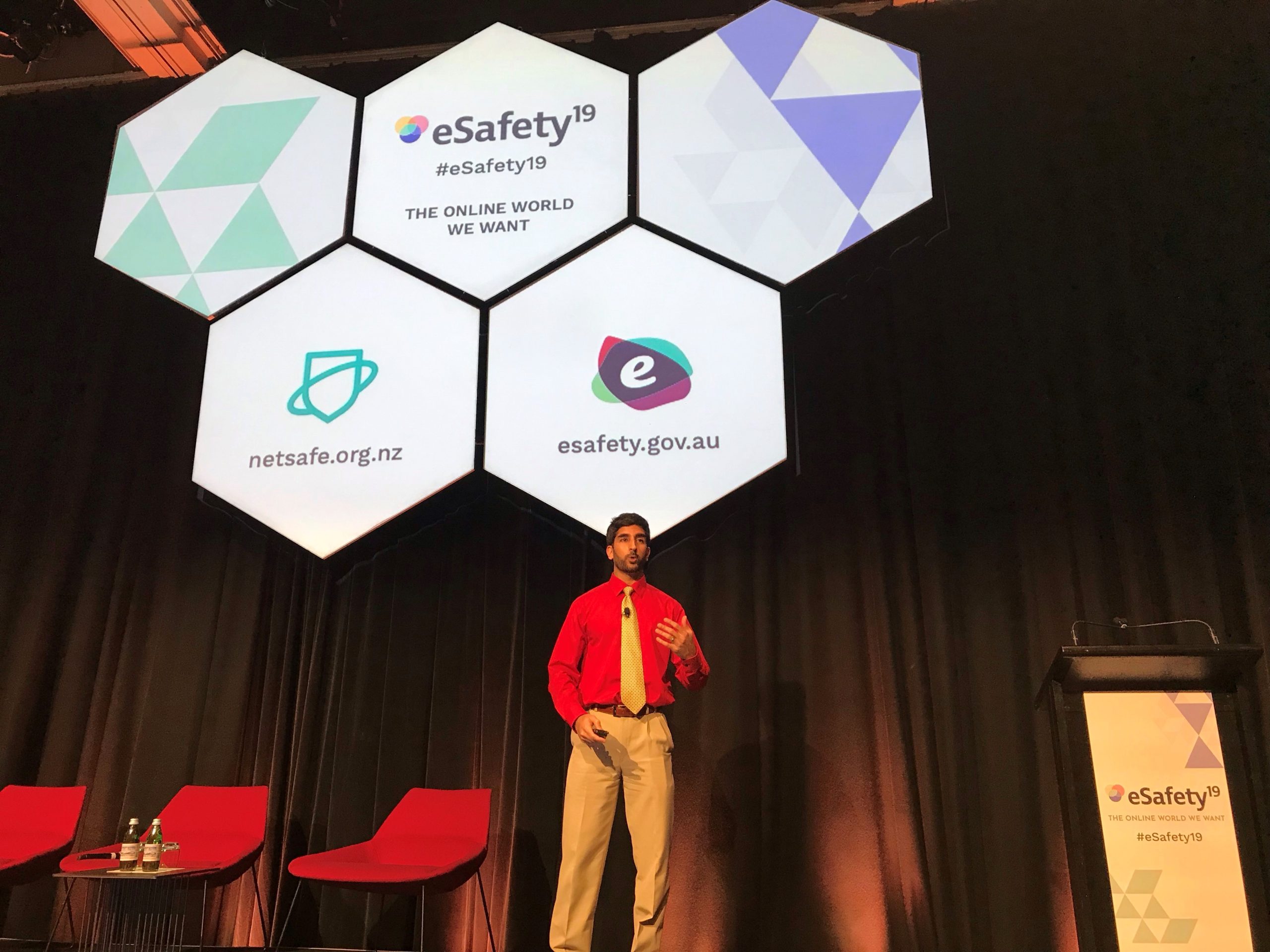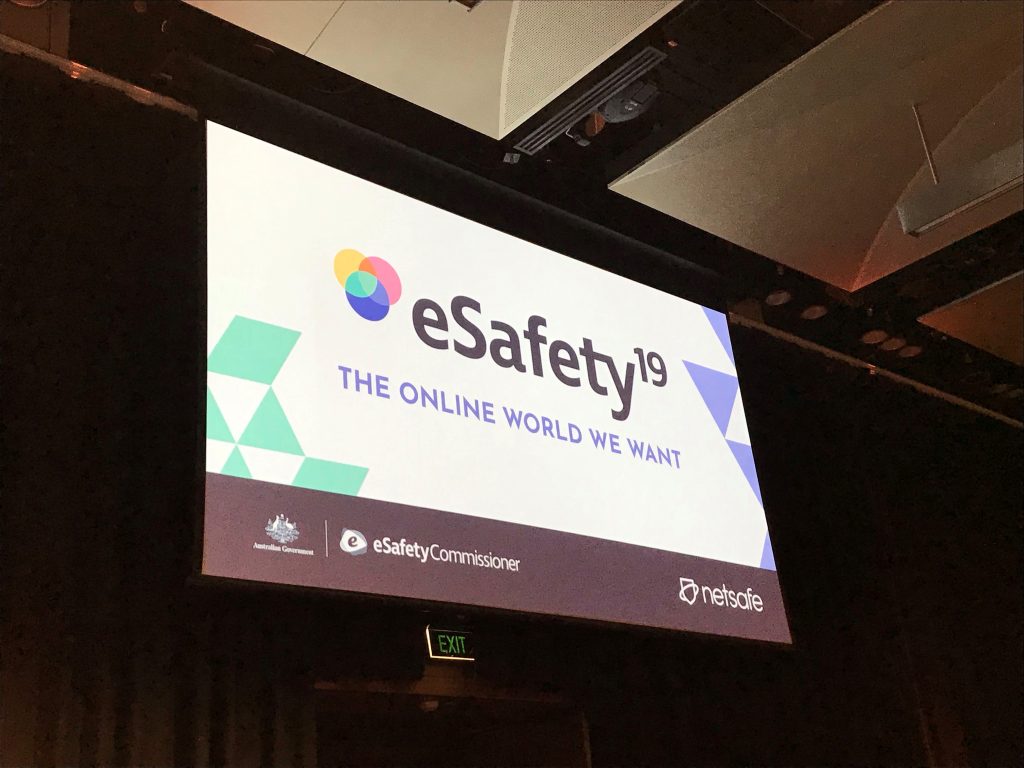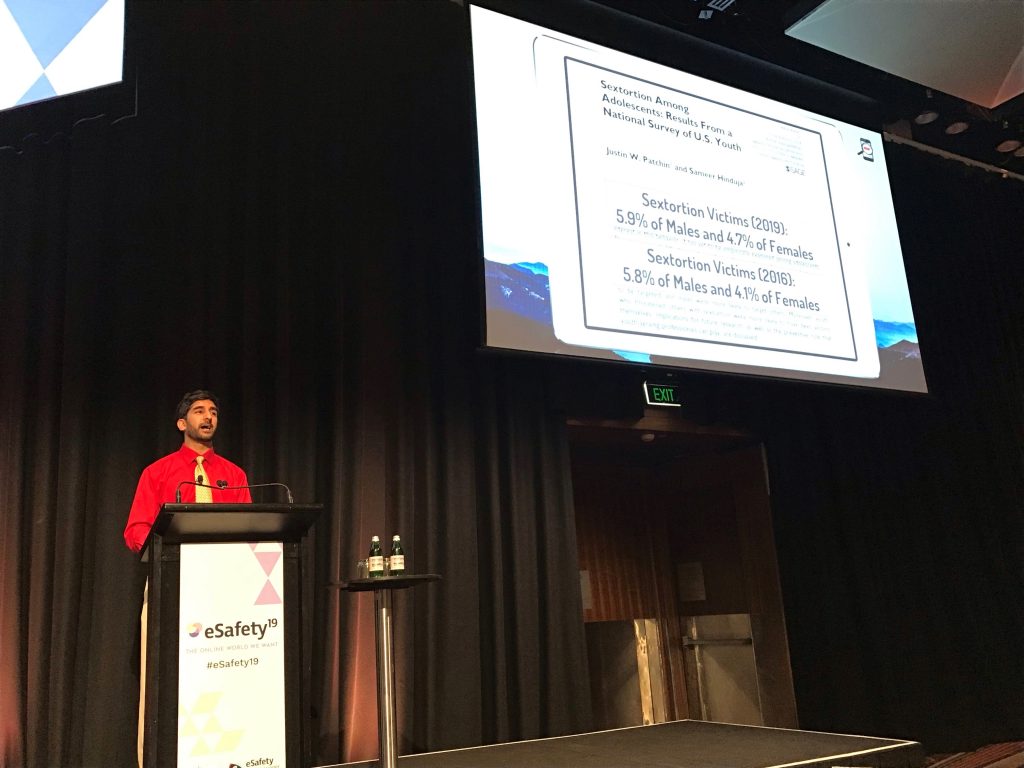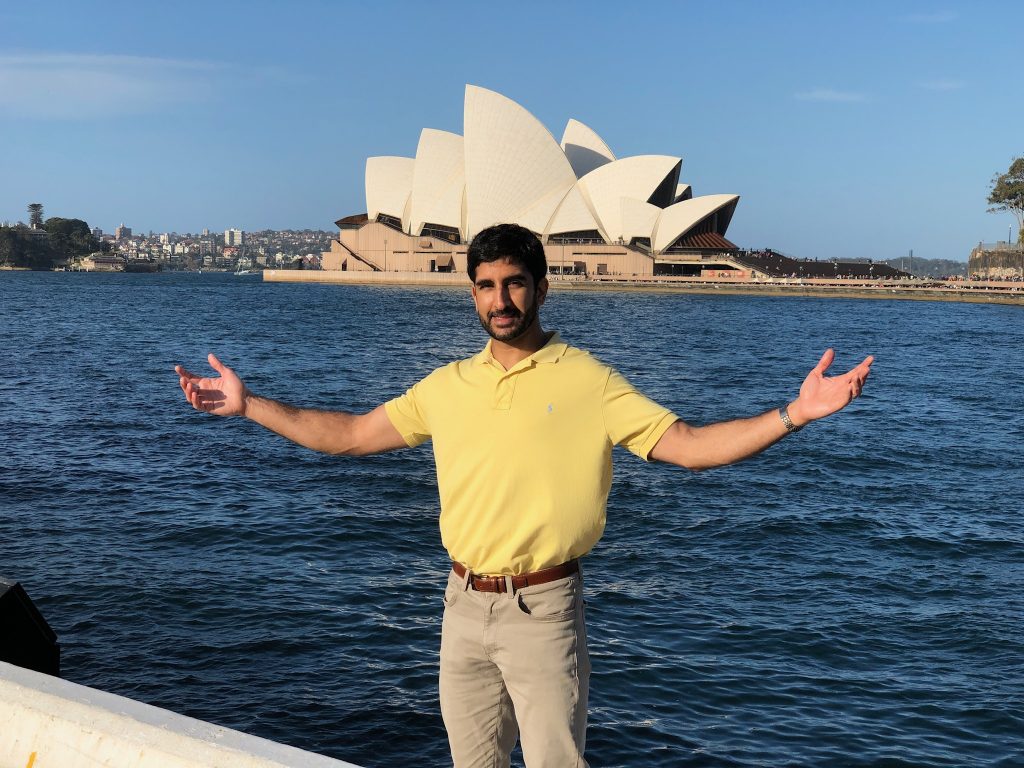
I just got back from my first-ever visit to Australia, and had an incredible time at the 2019 eSafety conference hosted by the Office of the eSafety Commissioner. The theme was “The Online World We Want,” and I was invited to discuss our 2019 research findings on bullying, cyberbullying, sexting, sextortion, and digital self-harm among US youth. After doing so, I spent the vast majority of my talk sharing a large number of actionable prevention and response strategies tied to building positive school climates, resilience, empathy and kindness, peer-driven initiatives, and more. It was quite an honor to be included among some international rock stars in our field, and I felt my presentation went really well.
Let me fill you in on some of the background, some of the highlights, and some of my takeaways. The event was hosted by Julie Inman Grant (Australia’s eSafety Commissioner) and Martin Cocker (CEO of NetSafe NZ – which is New Zealand’s online safety authority, supported by the Ministry of Education there), and is actually part of a series of annual gatherings of researchers and practitioners who work in online safety and risk prevention (Justin has spoken at previous conferences). Overarching ideas collectively discussed and championed included the following:
- the need to stop using fear tactics to “scare” youth into good behaviors (because they don’t work, and they just get everyone freaked out and irrational about the problems at hand)
- the need to incorporate Safety by Design when building social media platforms from the ground up so that the user interface (UI) and user experience (UX) is conducive to constructive and helpful (and not destructive and harmful) behaviors
- the need to thoughtfully consider how AI (artificial intelligence) and machine learning can help with content moderation to reduce online toxicity and promote positivity (one of my favorite topics!)
- the need to consider what new features in online games can lead to an unbalance, and how that can be prevented to ensure parity and sportsmanship across all game play

While I enjoyed all of the presenters and panelists, I want to give a special shout-out to a few people whose work directly intersected with my own and deeply resonated with me.
Stephen Balkam, CEO of the Family Online Safety Institute, helped us to imagine AI in the future, and reminded us of the need to approach its use with sober wisdom. His remarks are available here, and are worth a read (also check out my own thoughts specific to AI and cyberbullying).
Amanda Third, who spoke on the Global Kids Online project being led by Dr. Sonia Livingstone, discussed some incredibly interesting findings on the way that youth in the Global South (meaning, not North America or Europe or Asia) are using the Internet to meet their social, educational, and entertainment needs.
Tessy Ojo, CEO of The Diana Award, highlighted some inspiring stories while sharing about the encouraging results they are seeing from their youth-driven Anti-Bullying Ambassador program.
Carlos Figueiredo, Community Director of Trust and Safety at Two Hat Security, discussed the benefits for companies that intentionally and proactively engineer safety into their online products.
David Finkelhor, Sociology Professor at the University of New Hampshire’s Crimes Against Children Research Center, who reminded us for the need of evaluation research, articulated the importance of integrating online safety education into our standard “offline” safety education related to friendships, relationships, and health/well-being while also challenging us to move away from trite prescriptive statements directed at youth like “pause before you post!” and “don’t be a cyberbully!” and “stop sending nudes!”
Kerryann Walsh, Education Professor at the Queensland University of Technology, shared a comprehensive framework she created to help online safety education providers do a great job when they visit schools and speak to students. This was done after reviewing almost 200 research projects, existing frameworks, and child safety standards from around the world. To summarize it, best practice online safety education covers four themes (digital citizenship, social and emotional learning, content to address specific risks, and specifics for help-seeking). and should be: founded on children’s rights; framed positively (do this!) instead of negatively (don’t do this!); based on evidence (data!); embedded within the landscape of schools; well-designed and well-implemented; underpinned by principles of effective prevention; and aligned with and informing other priorities.

This is so very critical because some speakers utilize fear-mongering or tear-jerking messages that don’t really lead to long-lasting behavioral change, or cover the material in incomplete, unhelpful, or unrelatable ways. We simply want their programming to include certain research-based components (these are fleshed out in a currently embargoed document; reach out to Kerryann for more information) designed to increase the skills that students have to navigate all of these challenges, instead of being a quick hop-in and hop-out assembly with no follow-up or additional services provided. I was actually able to address these Australian eSafety education consultants at a separate Community of Practice seminar after the conference, and shared my best practices based on what I’ve learned from speaking at so many schools over the years (for a brief overview, see my blog on what the best cyberbullying speakers do).
As I briefly summarize what was covered in some of the presentations, doesn’t it make your wheels start to turn? Doesn’t it get you excited to think about these issues and the directions in which the field is headed? Here are my main takeaways:
- We are making progress when it comes to better safeguarding all users of the Internet, and so that should give everyone hope.
- We are becoming more skilled at integrating computer science (e.g., algorithms) and social science (e.g., studies of peer interactions and human behaviors) to identify, detect, and address online harm.
- We are identifying which marginalized populations need more support and protection online, and seeking to come through for them and amplify their neglected voices.
- And we are discovering the areas to which stakeholders across the spectrum – educators, mental health professionals, corporations, law enforcement, nonprofits, and youth themselves – should devote their attention.

It was such a fantastic conference – the people, the insights, and the enthusiasm. I expect a lot of collaborative efforts to arise between those who attended (there was plenty of time to network with others between sessions and over meals!), and I told the attendees that Justin and I are available to help in any way we can. Numerous people have already emailed me for resources, and we are thrilled that our work is assisting the professional efforts of those on the other side of the planet. I very much admire what my colleagues in Australia and New Zealand are doing, and am grateful for the opportunity to co-labor with them to create “the online world we want.”







